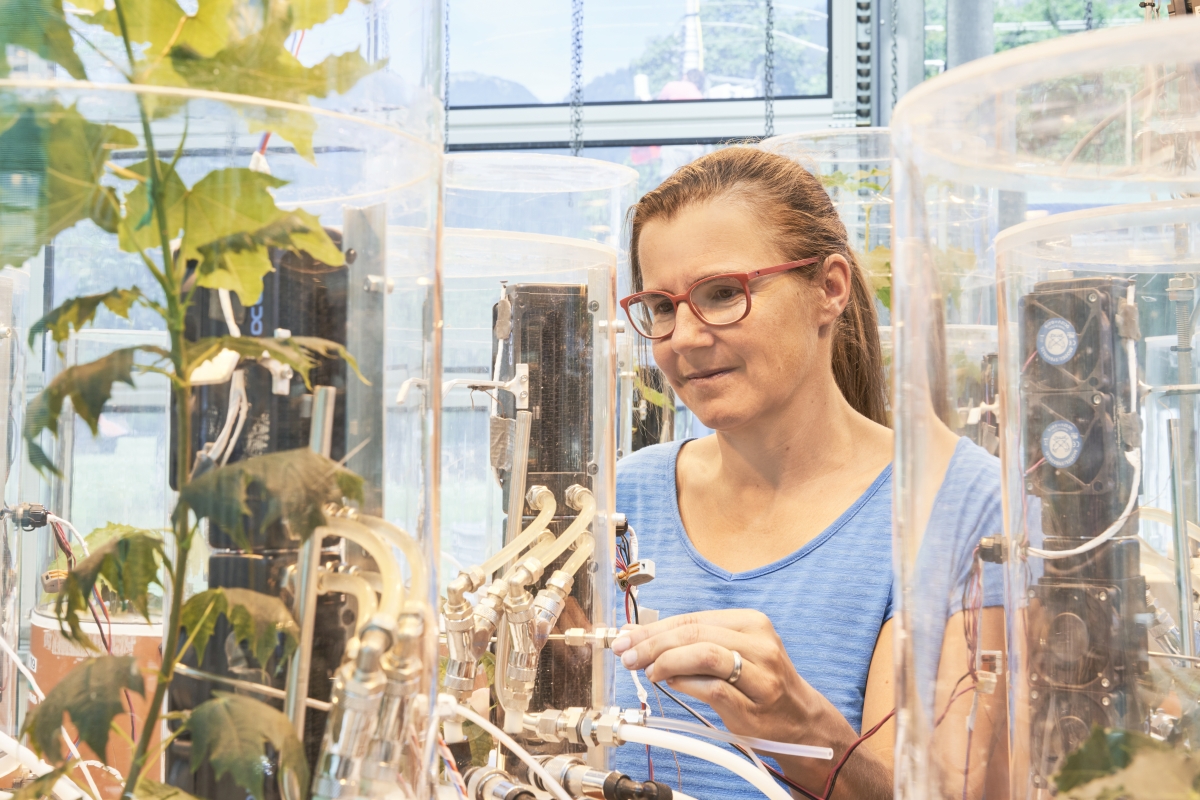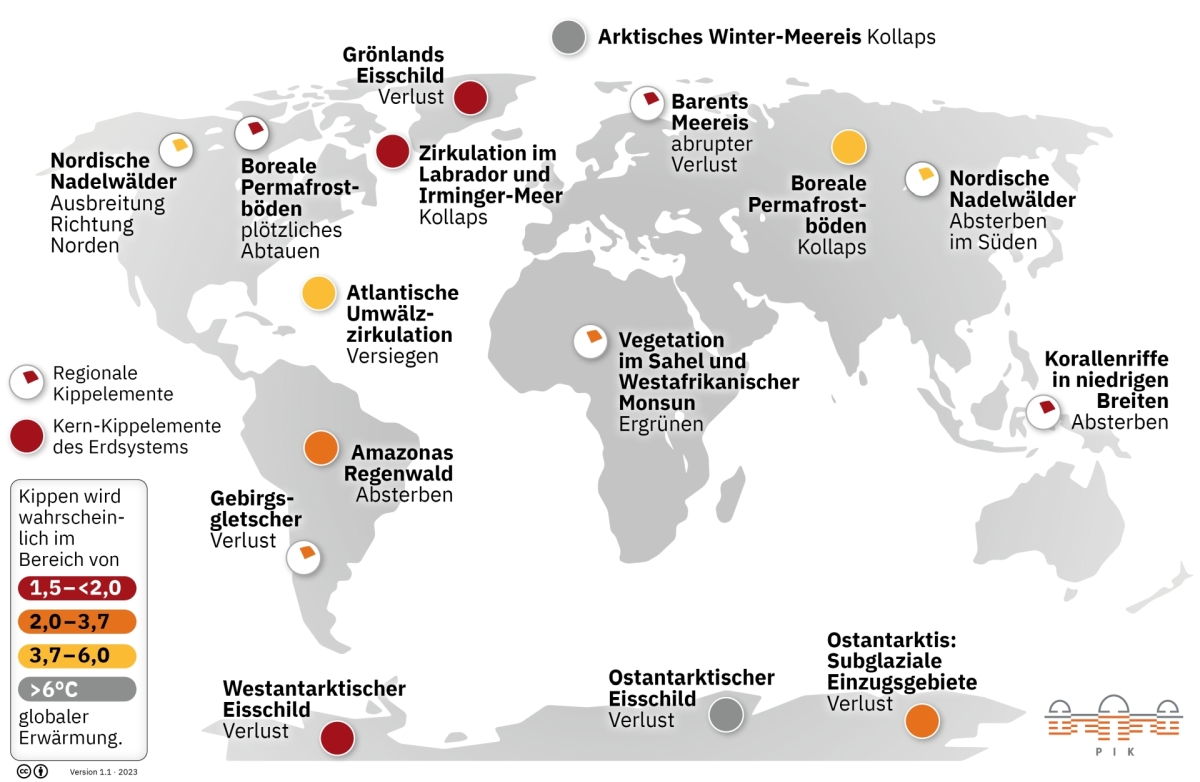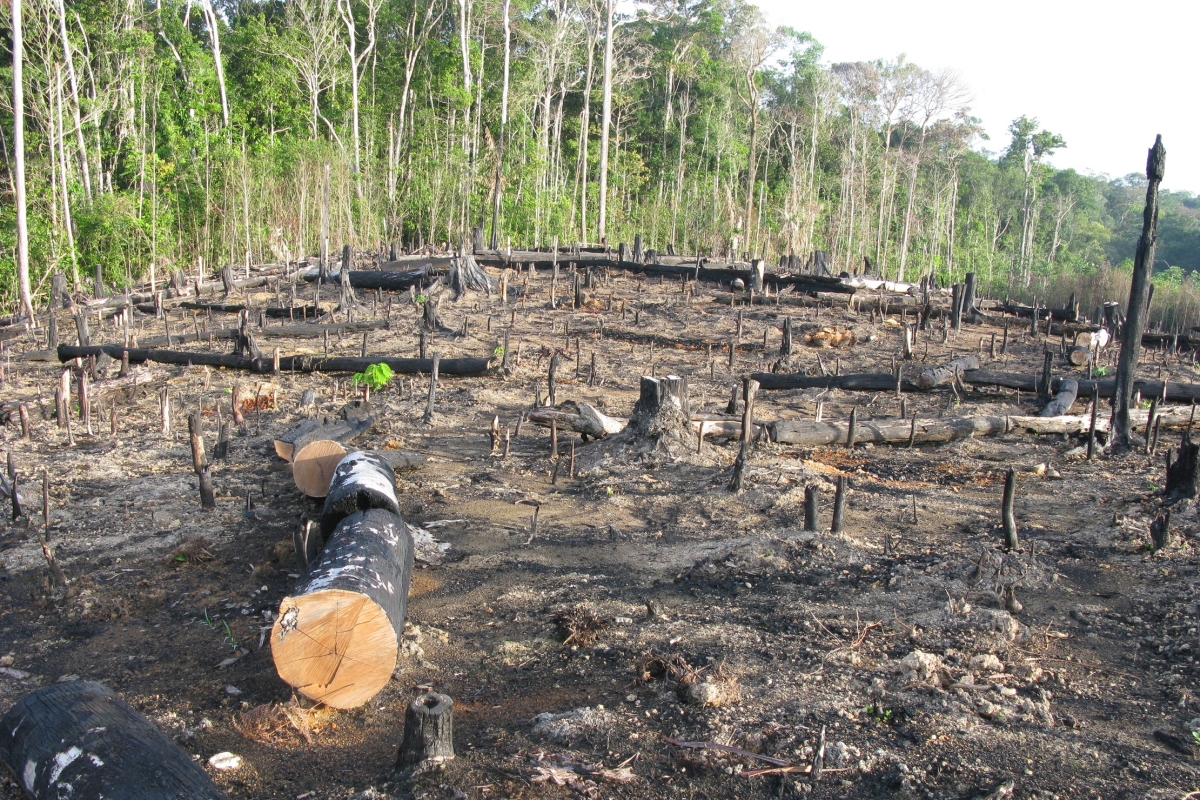At the Tipping Point
Climate change is about to impact our world severely – the Amazon rainforest is shrinking, Antarctic ice is melting, and circulation in the Atlantic Ocean is changing. In this context, scientists refer to climate tipping points. These mark critical thresholds that might be crossed because of global warming. The resulting consequences are irreversible. Crossing of a tipping point will cause inevitable, extreme regional and global climate changes. Researchers of Karlsruhe Institute of Technology (KIT) use three examples to illustrate what this means.
“Climate tipping points may be compared with a house of cards. Stable arrangement of the cards causes the house to remain stable and to maintain its function. If you pull out some cards, the house remains standing, but loses its function, until it becomes unstable and will collapse,” says Professor Nadine Rühr from KIT’s Institute of Meteorology and Climate Research Atmospheric Environmental Research (IMKIFU), KIT’s Campus Alpine in Garmisch-Partenkirchen.
“Tipping will occur when the stress on global climate systems will increase permanently. This may have far-reaching consequences for humans and the environment,” Rühr says. 16 elements of the Earth’s climate system were identified as potential tipping points by the Potsdam Institute for Climate Impact Research. These elements are already losing stability and function, a potential tipping point may be reached soon.
Seaside Cities Are Threatened by the Melting of the West Antarctic Ice Sheet
One of these tipping points is the West Antarctic ice sheet. At some points, it is as thick as the Alps are high. Its melting due to global warming is a potential tipping point in the climate system. “Among others, the tipping point affects the glaciers Thwaites and Pine Island of the West Antarctic,” says Professor Andreas Fink from KIT’s Institute of Meteorology and Climate Research Troposphere Research (IMKTRO). The Thwaites glacier having an area as large as Florida stabilizes the West Antarctic ice sheet together with the Pine Island glacier.
“The lower edge of the inland ice is mainly located below sea level. The neighboring ice tongues of the shelf glaciers are connected to mountain ridges just below sea level for stabilization. Warming waters melt the ice tongues of the shelf glaciers and cause them to break off within a few years,” Fink explains. This phenomenon annihilates the stabilizing effect of the shelf ice that surrounds the West Antarctic, so that large parts of the inland ice sheets might drift away and melt rather quickly.
“The tipping point of the West Antarctic ice sheet might be reached soon – with disastrous consequences for big seaside cities,” Fink adds. The collapse of the Thwaites glacier and other parts of the West Antarctic ice sheet might cause the sea level to rise by about 3 meters. “Accelerated melting of the West Antarctic appears to be inevitable. It is still uncertain how strong the collapse of the West Antarctic ice sheet will be and to what an extent the sea level will rise. But it is agreed: Every 10th of a degree less in global warming would help prevent the melting of many cubic kilometers of ice and slow down the rise of the sea level,” Fink says.
Weakening of Atlantic Circulation Systems Would Affect Global Climate
The collapse of the West Antarctic ice sheet and a strong increase in global warming could weaken another system or cause it to collapse in the extreme case: The Atlantic Meridional Overturning Circulation (AMOC). It is one of the most important circulation systems of the oceans.
“The AMOC is part of thermohaline circulation. Like a giant conveyor belt, it moves warm water and nutrients from and to all big oceans of our planet,” says Professor Joachim Pinto from IMKTRO. Warm and cold water is circulated at various depths of the Atlantic Ocean. Along the North American coast, warm subsurface water flows North and East to Northern Europe together with the Gulf Stream. That is why the climate in Northern Europe is mild. In parallel, cold water in deeper water layers flows from the North back to the South Atlantic.
“Scientists found that global warming weakens thermohaline circulation and, hence, the AMOC,” Pinto says. If this phenomenon continues or the AMOC breaks down, consequences for Europe and on the global level would be enormous. “Temperatures in Europe might drop considerably, water levels on the US coast might rise, and rain belts in Southern Africa might shift. This would significantly change regional weather and climate and potentially threaten the lives and existence of millions of people,” Pinto points out.
Amazon: The Unique Habitat Is Threatened by Functional Loss
The Amazon rainforest plays a key role in stabilizing the global climate. It illustrates that the statements made above are not just theory. “An important factor is the deforestation of the rainforest. It does not only cause the emission of even more tons of carbon dioxide into the atmosphere, but, above all, it makes the forest shrink,” Nadine Rühr explains. “However, a forest must be a certain size to be able to sustain itself on rainwater. When it shrinks, the system will not work any longer.”
The reason: Water continues to evaporate from the still existing trees, but rains down somewhere else or the rain falls on areas that have already been cleared. This means that water supply for the Amazon rainforest is no longer sufficient so that it inevitably turns into a steppe or even a desert. “Moreover, global warming will cause more frequent drought periods. Many trees react very sensitively, they become ill or die,” Rühr adds. “It is already obvious that the composition of tree species has changed: Trees that are less drought-resistant die back, while more drought-resistant trees are gaining ground.”
It is difficult to predict when exactly the tipping point will be reached in the Amazon rainforest. “So far, the tipping point has not yet been reached. However, more and more cards are pulled out of our house and it starts to become unstable,” Rühr says. Tipping of the Amazon rainforest would have fatal consequences. The unique diversity of species would be lost. The forest would no longer take up CO2 from the air. The resulting steppes would bring the global climate out of step and cause a worldwide increase in droughts and floods.
Still, it is not yet too late. “When we manage to get to grips with deforestation and to regenerate areas, we will be on the right track. Moreover, we should question those factors of our personal lifestyle that increase the pressure on the Amazon and enhance climate change,” Rühr says. This also includes the consumption of meat. Soy from the Amazon region significantly contributes to the destruction of the forest, as does the cultivation of oil palms for the production of palm oil. “The fact that this potential tipping point exists alone should give us the necessary respect and make us understand that we have to do everything to preserve this system. When it will be too late, the house of cards can no longer be reassembled.”
Aileen Seebauer, February 14, 2024
Translation by: Dipl.-Übers. Maike Schröder

Issue 2023/4 of the research magazine lookKIT deals with the main topic of the Science Year 2023.
Read Now




